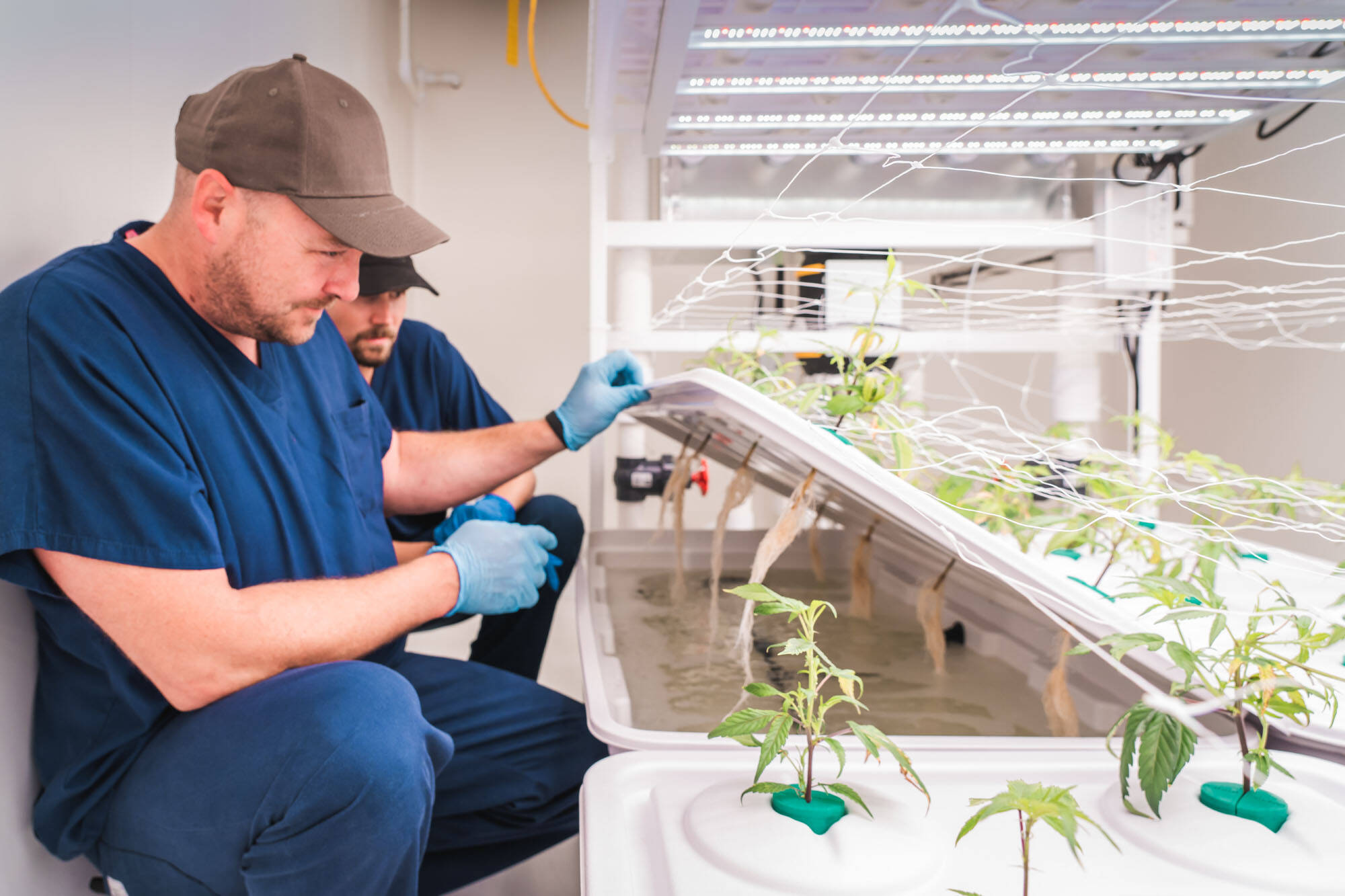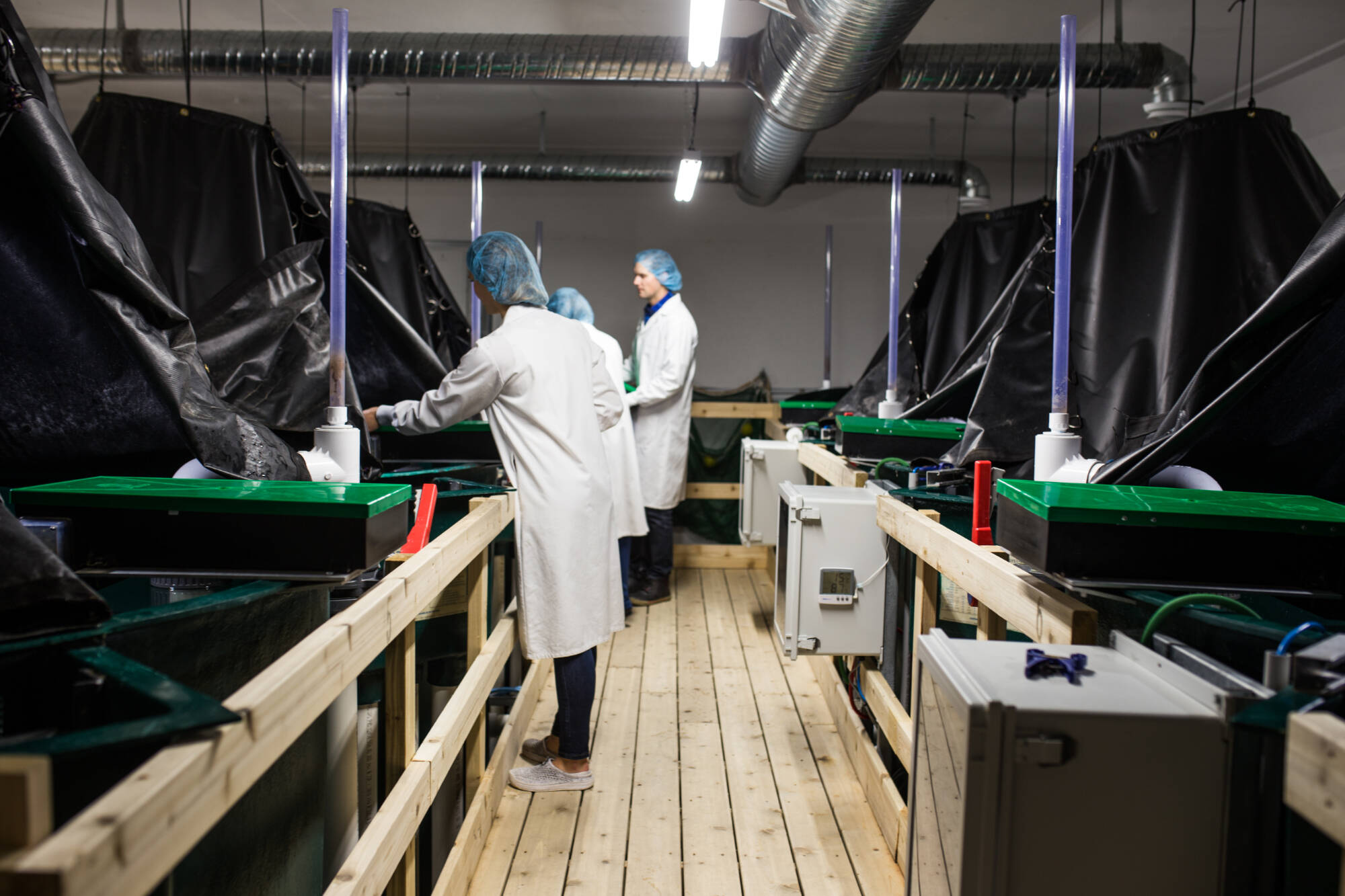By Jim Coooperman
In the heart of Turtle Valley, in the BC Shuswap, there’s a state-of-the-art agricultural operation that’s the only one like it in the world.
By combining inland salmon farming with a hydroponic cannabis operation, two former hockey players are making history producing high-quality products at a lower cost. In addition, they also raise free-range bison sustainably, which ties in with their ranching heritage.
Habitat Craft Cannabis founders Rudi Schiebel and Laine Keyes both experienced hockey injuries that they treated successfully using cannabis.
Consequently, they began their company under the Marijuana for Medical Purposes Regulations in 2013 and decided to explore the idea of using aquaponics with koi fish for fertilizing the cannabis. After some initial success, they realized that organic coho salmon would be more marketable and began building their operations on Laine’s family’s fifth-generation property.
To achieve their dream they needed significant capital. They began by securing funding from family and friends before raising the majority of funds they needed from investors, all totalling $7 million. Their first step was converting the 70-year-old barn on leased land across from their bison ranch into a high-tech facility that includes fish tanks, grow rooms and a room filled with high-tech pumps and other equipment. Key to their success was bringing in Aquaculture Director Justin Henry, with 25 years of experience in the inland fish farming industry.
A one-of-a-kind process was developed that recycles the water used for both the fish and the cannabis. The waste from the fish is filtered and processed using microorganisms to aerobically digest it into nutrients and CO2 for the plants. The evaporated water from the plants’ transpiration is also captured and reused. All the parameters are controlled with computerized instrumentation, including temperatures, pH and nutrient levels. Schiebel and Keyes consider this complex technology to be a trade secret rather than patentable intellectual property and would have kudos for anyone who could successfully replicate it.
The process begins four times a year when receive they 550 female salmon fry from an inland fish farm on the coast. The growing fish are fed an organic formula including sustainably grown insects, and are raised in a series of six tanks, ending with the finish tank. While coho take four years to grow to maturity in the wild, these fish mature in 18 months by revising the timing of lighting, which speeds up their perception of time. Every week they harvest 25 fish that weigh approximately 3.5 kg each, which are sold to the Quaaout Lodge and Fisherman’s Market in Kamloops.
Given that their medical licence limits Habitat’s growing area to 200 sq. m., they only produce about 800 kg of craft cannabis, which has done well in the B.C. market because of its recognized quality. One day, they hope to have farm gate sales, which would be far more profitable.
Growth is in the horizon for the Habitat team. The team aims to expand their four metric tonne annual salmon production to one day reaching 1,000 tonnes, with the high demand for organic salmon. The market for cannabis has not been as reliable, so their goal is to one day also grow vegetables, beginning with tomatoes and cucumbers.
Habitat’s unique combination of aquaculture with hydroponic agriculture using LED lighting increases the food production per acre of land, eliminates the need for chemical fertilizers, and conserves water. This sustainable production system has a minimal carbon footprint and has little impact on the environment. One day if insect farming was added, production would become nearly self-sufficient.
Find the latest must-read stories from the cannabis world at canadianevergreen.com, your go-to source for news, trends, products and lifestyle inspiration from the cannabis community and beyond. You can also follow us on Facebook and Instagram and Twitter.


